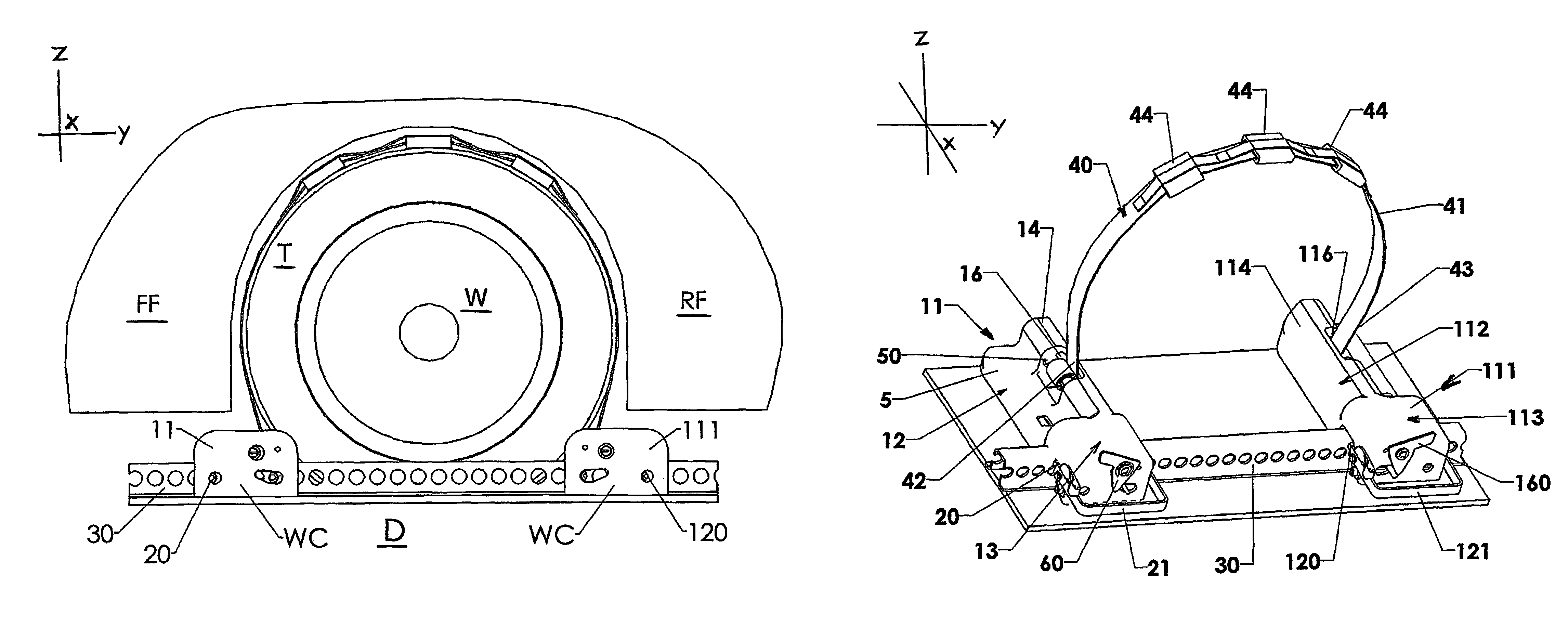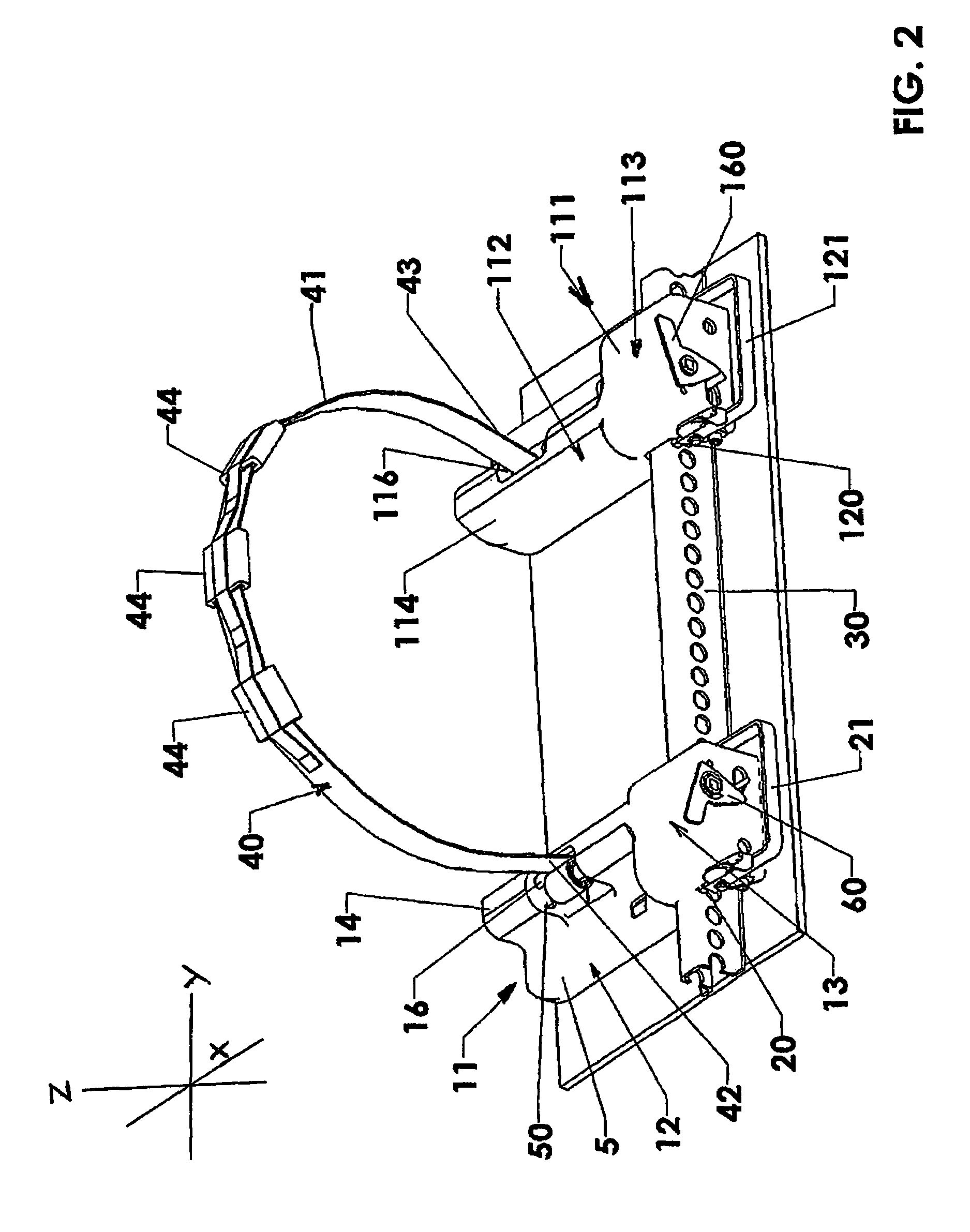Low-profile wheel chock assembly
a low-profile, wheel technology, applied in the direction of load securing, transportation and packaging, transportation items, etc., can solve the problems of difficult to chock a wheel, lack of clearance, and inability to afford manual installation of automobiles, so as to enhance the rigidity of the monolithic body and effectively prestress the body
- Summary
- Abstract
- Description
- Claims
- Application Information
AI Technical Summary
Benefits of technology
Problems solved by technology
Method used
Image
Examples
Embodiment Construction
[0046]Referring to the drawings, and particularly to FIGS. 1 and 2, there is shown a “low-drag” fender having front and rear portions FF and RF respectively defining a wheel-well in which a wheel W is located. As is evident, the periphery of the fender is adjacent the periphery of the tread of the tire leaving a clearance of less than 6.35 cm (2.5″). The lower edge of the fender, above deck D on which the wheel rests, is less than 15.0 cm (5.9″) above the deck D.
[0047]A wheel chock assembly, indicated generally by WC, includes a pair of first (front) and second (rear) active chocks, indicated generally by reference numerals 11 and 111 respectively, as they would be positioned beneath a car, chocking a tire T between them. Each chock 11 and 111 is locked with first and second locking means 20 and 120 respectively, to a chock-rail 30 fixed to the deck D, each chock in a location chosen so as to contact and snugly restrain the tire T between them. The heads of pins 71, 72 (see FIG. 7) ...
PUM
 Login to View More
Login to View More Abstract
Description
Claims
Application Information
 Login to View More
Login to View More - R&D
- Intellectual Property
- Life Sciences
- Materials
- Tech Scout
- Unparalleled Data Quality
- Higher Quality Content
- 60% Fewer Hallucinations
Browse by: Latest US Patents, China's latest patents, Technical Efficacy Thesaurus, Application Domain, Technology Topic, Popular Technical Reports.
© 2025 PatSnap. All rights reserved.Legal|Privacy policy|Modern Slavery Act Transparency Statement|Sitemap|About US| Contact US: help@patsnap.com



